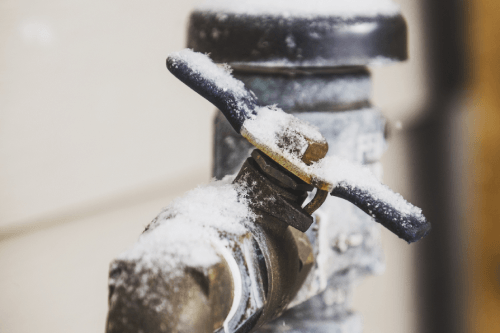Key Methods for Avoiding Frozen Pipes in Winter
Call TodayJust about every person maintains his or her own way of thinking in relation to How to prepare your home plumbing for winter weather.

Cold weather can ruin your plumbing, specifically by freezing pipes. Right here's just how to prevent it from occurring and what to do if it does.
Intro
As temperatures decrease, the threat of icy pipes boosts, possibly bring about pricey repair work and water damages. Recognizing just how to prevent frozen pipes is essential for house owners in chilly environments.
Comprehending Icy Pipes
What triggers pipes to freeze?
Pipes freeze when exposed to temperatures listed below 32 ° F (0 ° C) for expanded durations. As water inside the pipelines freezes, it increases, putting pressure on the pipe wall surfaces and potentially triggering them to rupture.
Threats and damages
Icy pipelines can lead to supply of water interruptions, residential property damage, and pricey repair services. Burst pipes can flooding homes and create considerable structural damages.
Indicators of Frozen Pipes
Identifying frozen pipelines early can stop them from breaking.
Just how to determine frozen pipes
Look for lowered water circulation from faucets, unusual smells or sounds from pipes, and visible frost on revealed pipes.
Prevention Tips
Shielding prone pipes
Cover pipelines in insulation sleeves or use warm tape to secure them from freezing temperatures. Focus on pipelines in unheated or outside areas of the home.
Home heating methods
Maintain interior spaces effectively warmed, specifically areas with pipes. Open closet doors to allow cozy air to circulate around pipelines under sinks.
Protecting Outside Pipes
Yard tubes and exterior taps
Detach and drain pipes yard pipes before wintertime. Mount frost-proof spigots or cover outside faucets with shielded caps.
What to Do If Your Pipelines Freeze
Immediate actions to take
If you think frozen pipes, keep faucets available to relieve pressure as the ice thaws. Make use of a hairdryer or towels taken in hot water to thaw pipes gradually.
Long-Term Solutions
Structural adjustments
Take into consideration rerouting pipes far from outside wall surfaces or unheated locations. Include added insulation to attic rooms, cellars, and crawl spaces.
Updating insulation
Purchase top notch insulation for pipelines, attics, and walls. Proper insulation aids keep regular temperatures and reduces the threat of icy pipes.
Conclusion
Preventing icy pipes calls for proactive measures and fast reactions. By recognizing the causes, signs, and safety nets, home owners can secure their plumbing throughout cold weather.
5 Ways to Prevent Frozen Pipes
Drain Outdoor Faucets and Disconnect Hoses
First, close the shut-off valve that controls the flow of water in the pipe to your outdoor faucet. Then, head outside to disconnect and drain your hose and open the outdoor faucet to allow the water to completely drain out of the line. Turn off the faucet when done. Finally, head back to the shut-off valve and drain the remaining water inside the pipe into a bucket or container. Additionally, if you have a home irrigation system, you should consider hiring an expert to clear the system of water each year.
Insulate Pipes
One of the best and most cost-effective methods for preventing frozen water pipes is to wrap your pipes with insulation. This is especially important for areas in your home that aren’t exposed to heat, such as an attic. We suggest using foam sleeves, which can typically be found at your local hardware store.
Keep Heat Running at 65
Your pipes are located inside your walls, and the temperature there is much colder than the rest of the house. To prevent your pipes from freezing, The Insurance Information Institute suggests that you keep your home heated to at least 65 degrees, even when traveling. You may want to invest in smart devices that can keep an eye on the temperature in your home while you’re away.
Leave Water Dripping
Moving water — even a small trickle — can prevent ice from forming inside your pipes. When freezing temps are imminent, start a drip of water from all faucets that serve exposed pipes. Leaving a few faucets running will also help relieve pressure inside the pipes and help prevent a rupture if the water inside freezes.
Open Cupboard Doors
Warm your kitchen and bathroom pipes by opening cupboards and vanities. You should also leave your interior doors ajar to help warm air circulate evenly throughout your home.

As a devoted reader on How to Prevent Your Pipes From Freezing, I think sharing that piece of content was a good thing. Do you know about anybody else who is enthusiastic about the niche? Do not hesitate to share it. We appreciate your readership.
Schedule Services